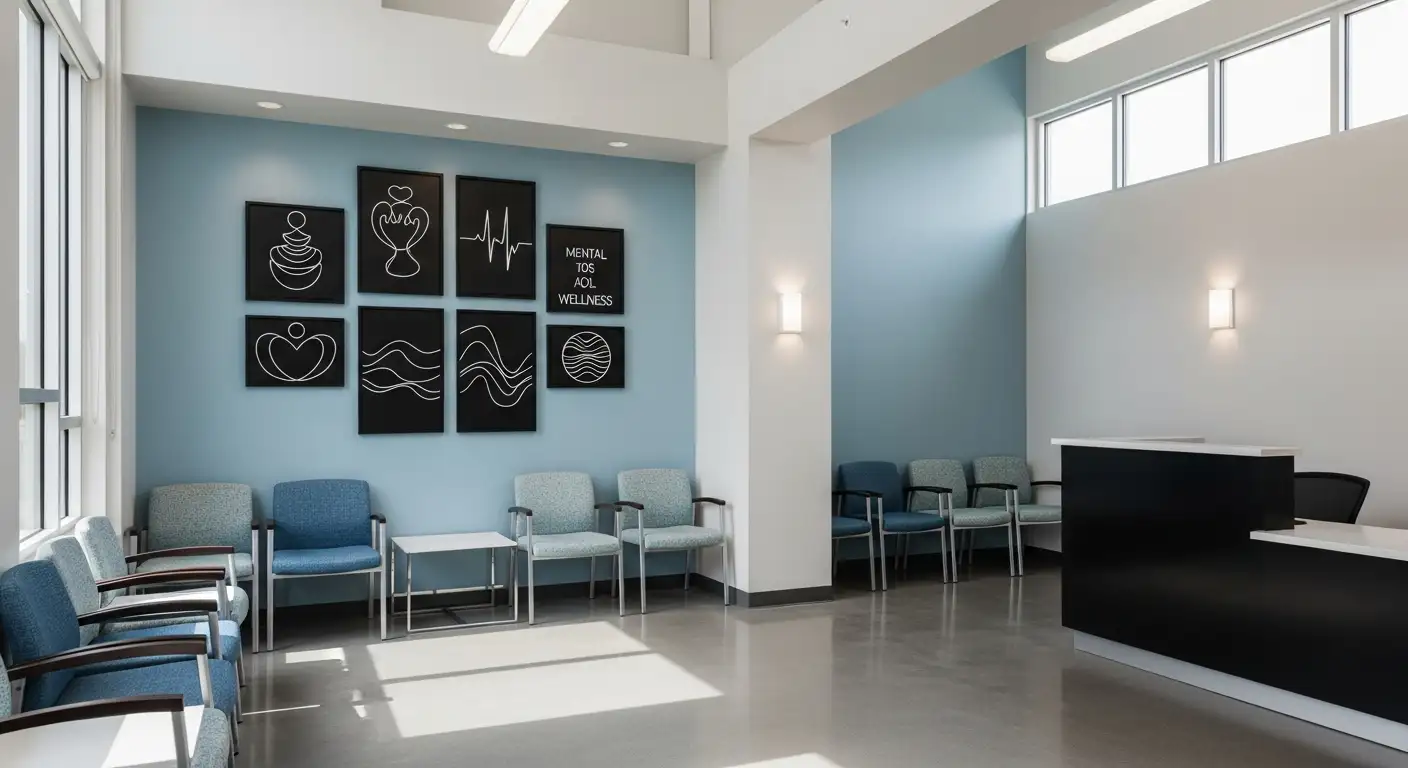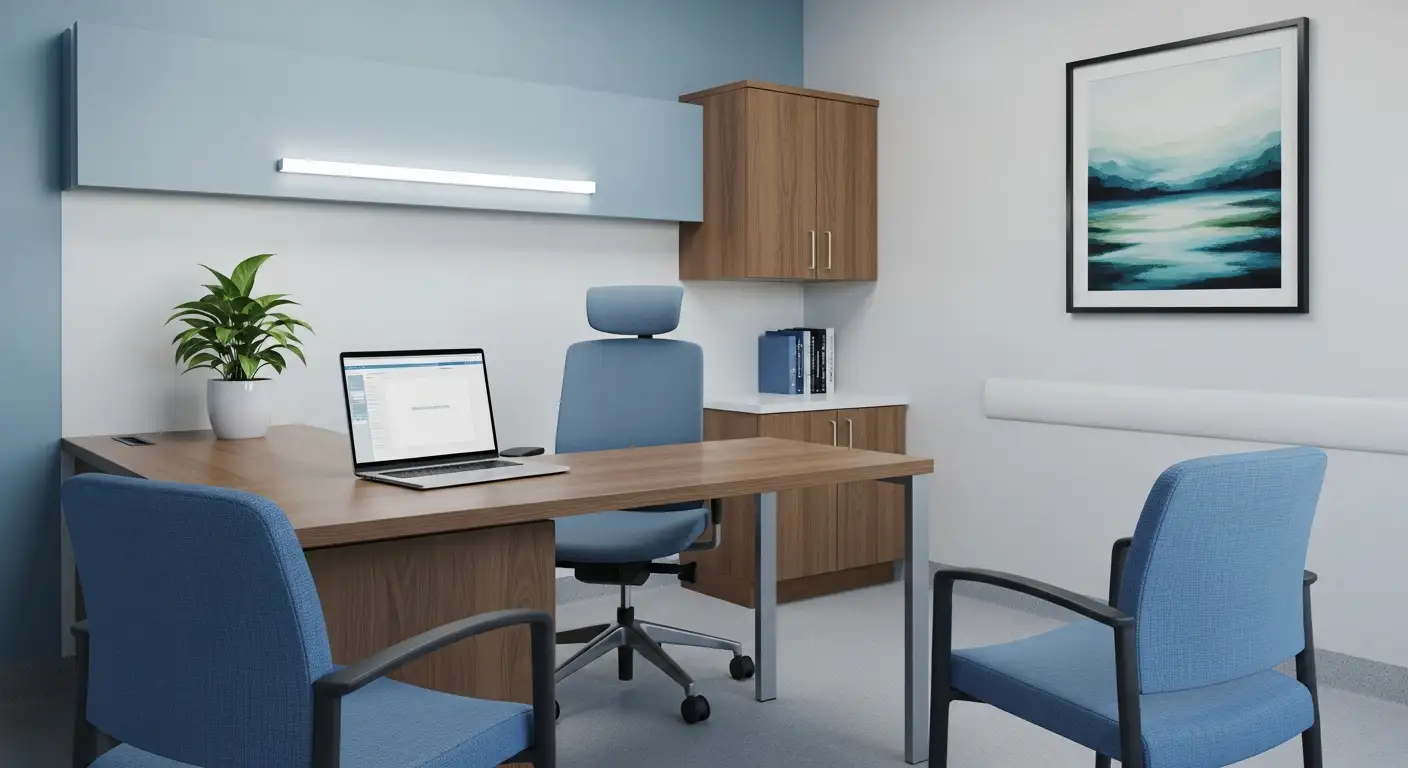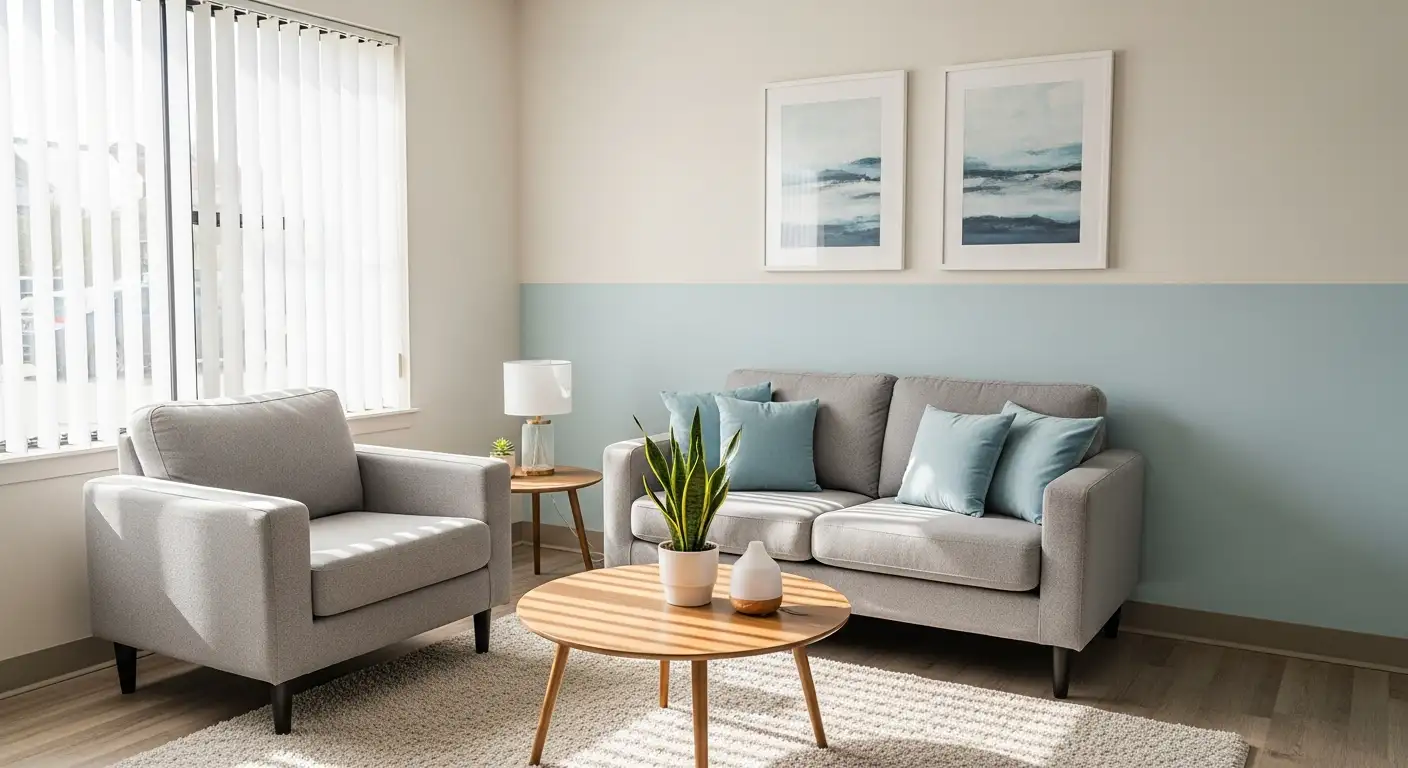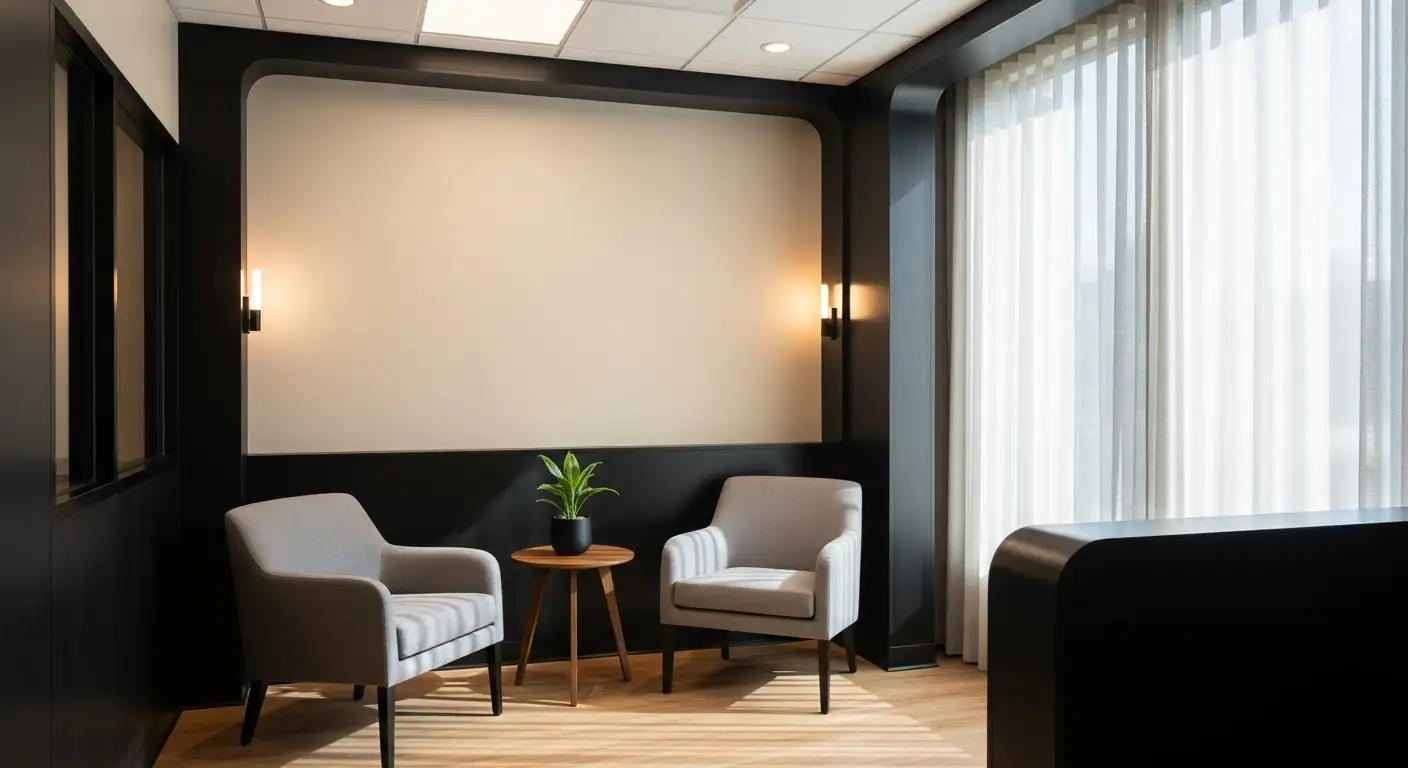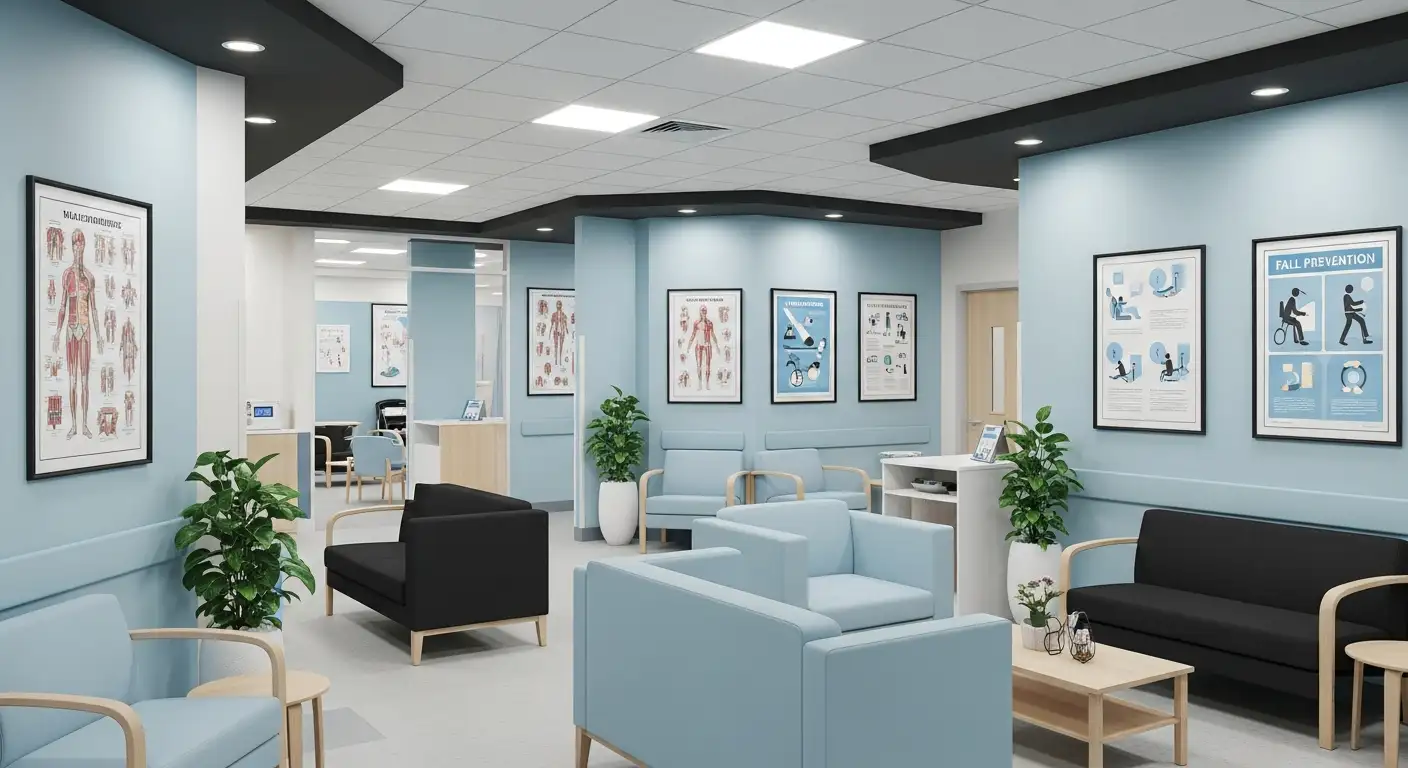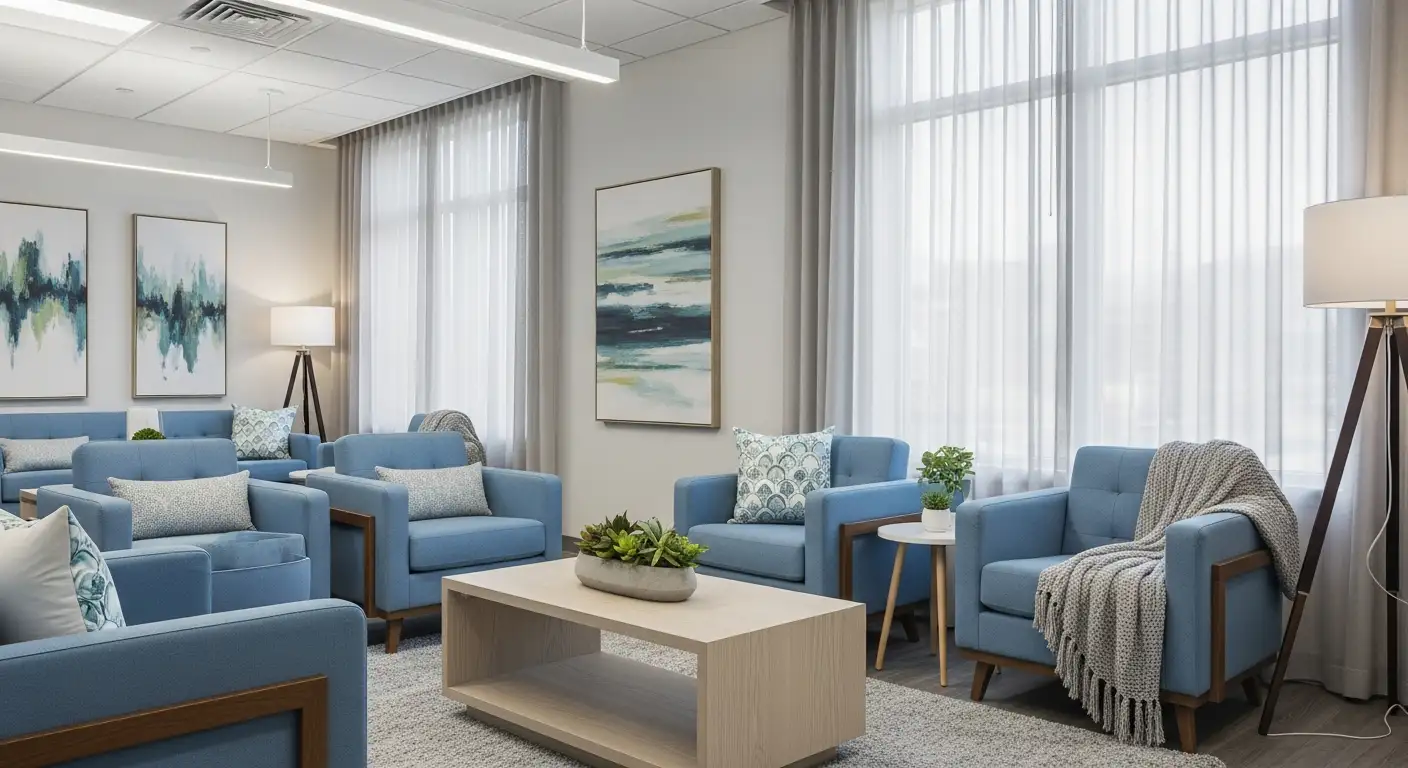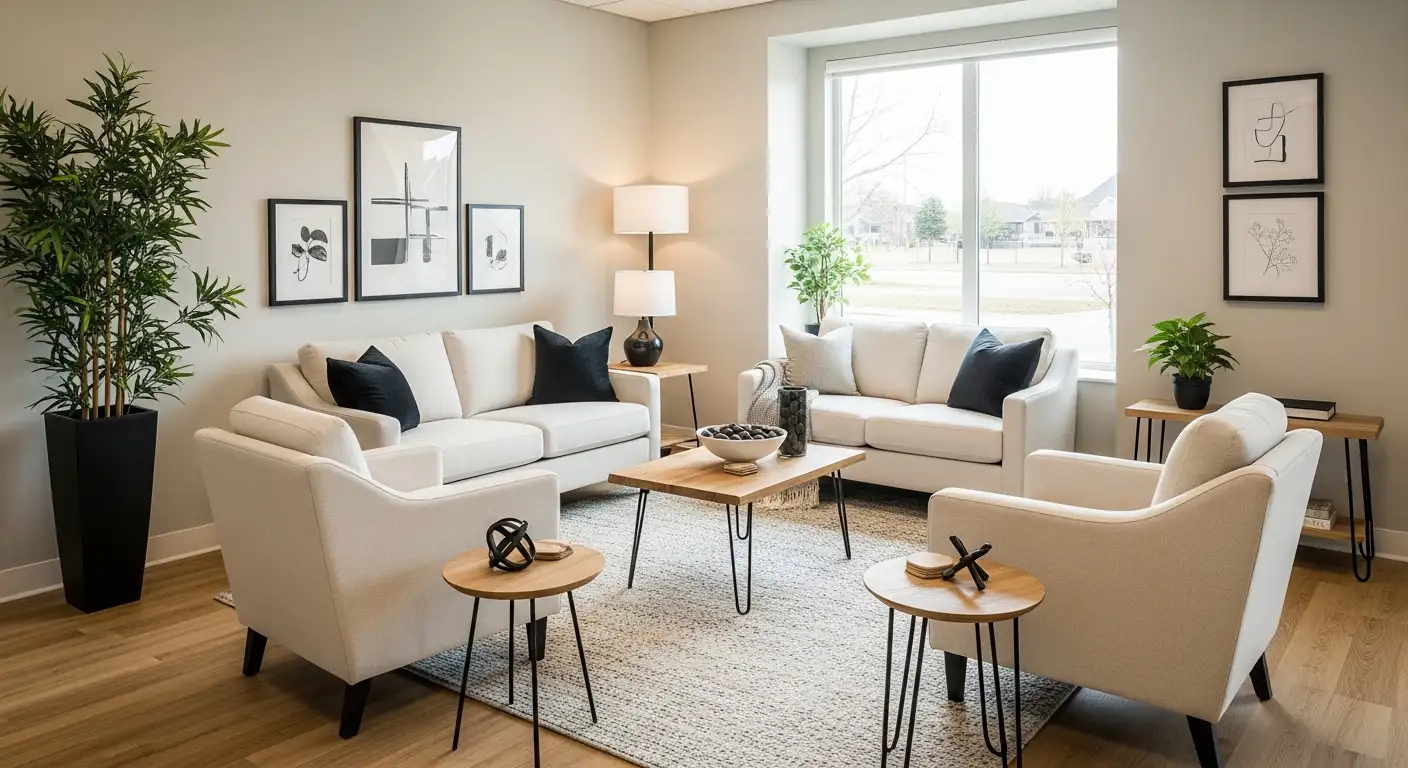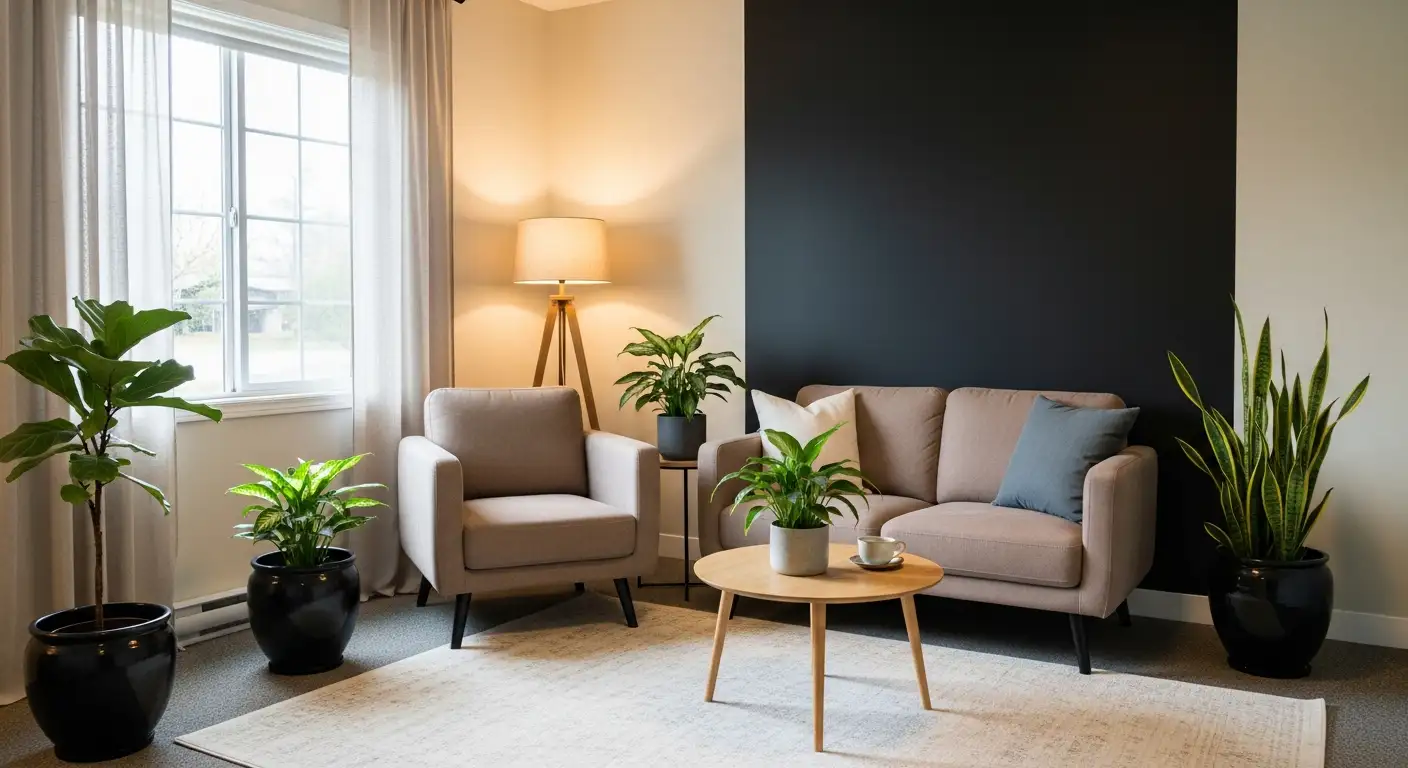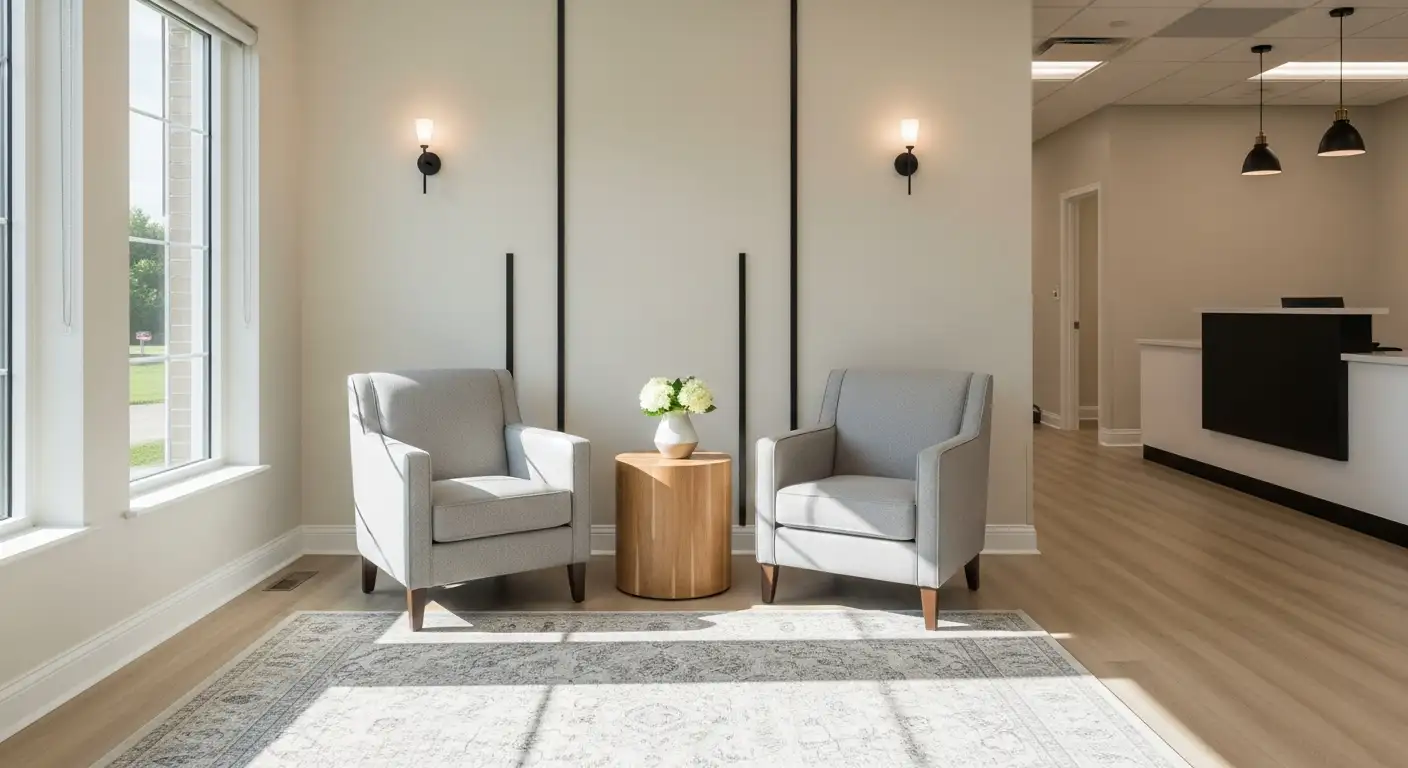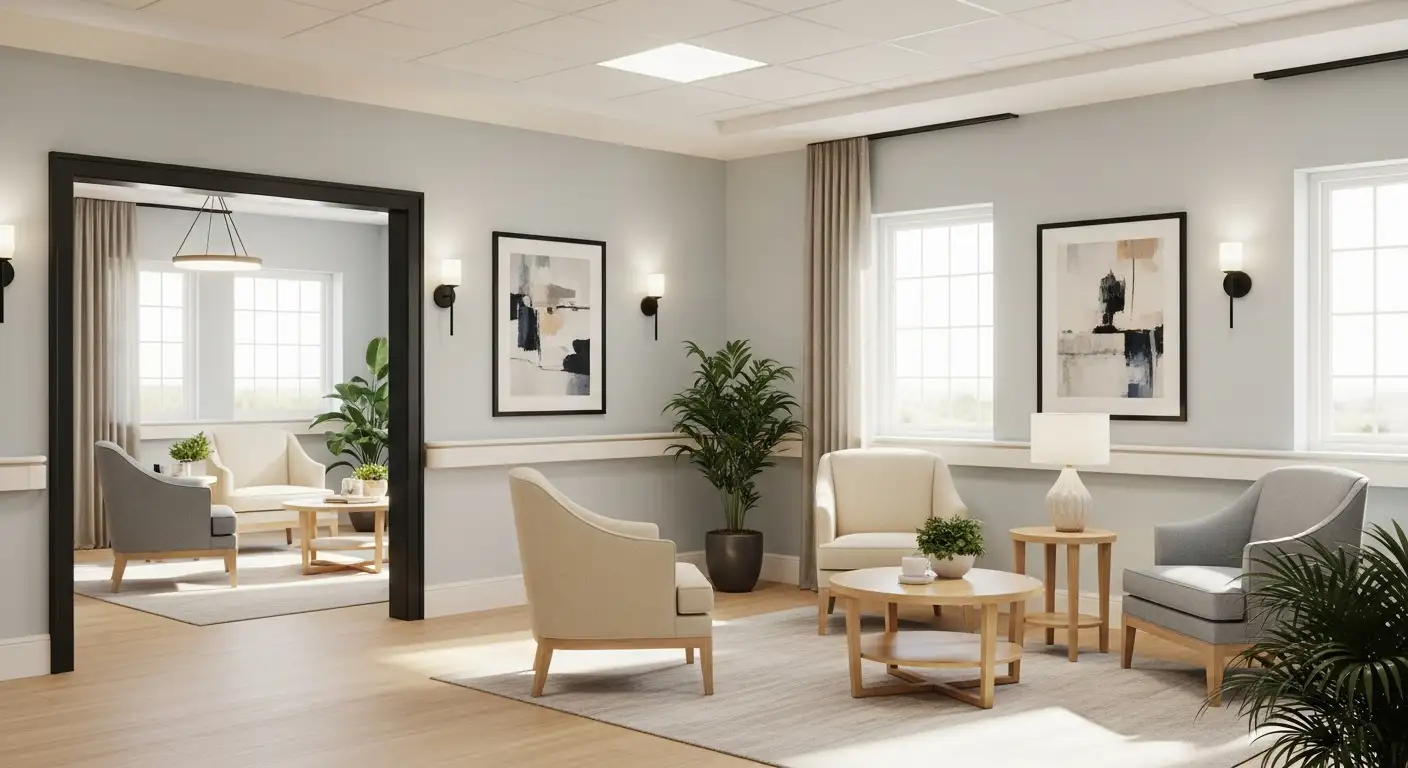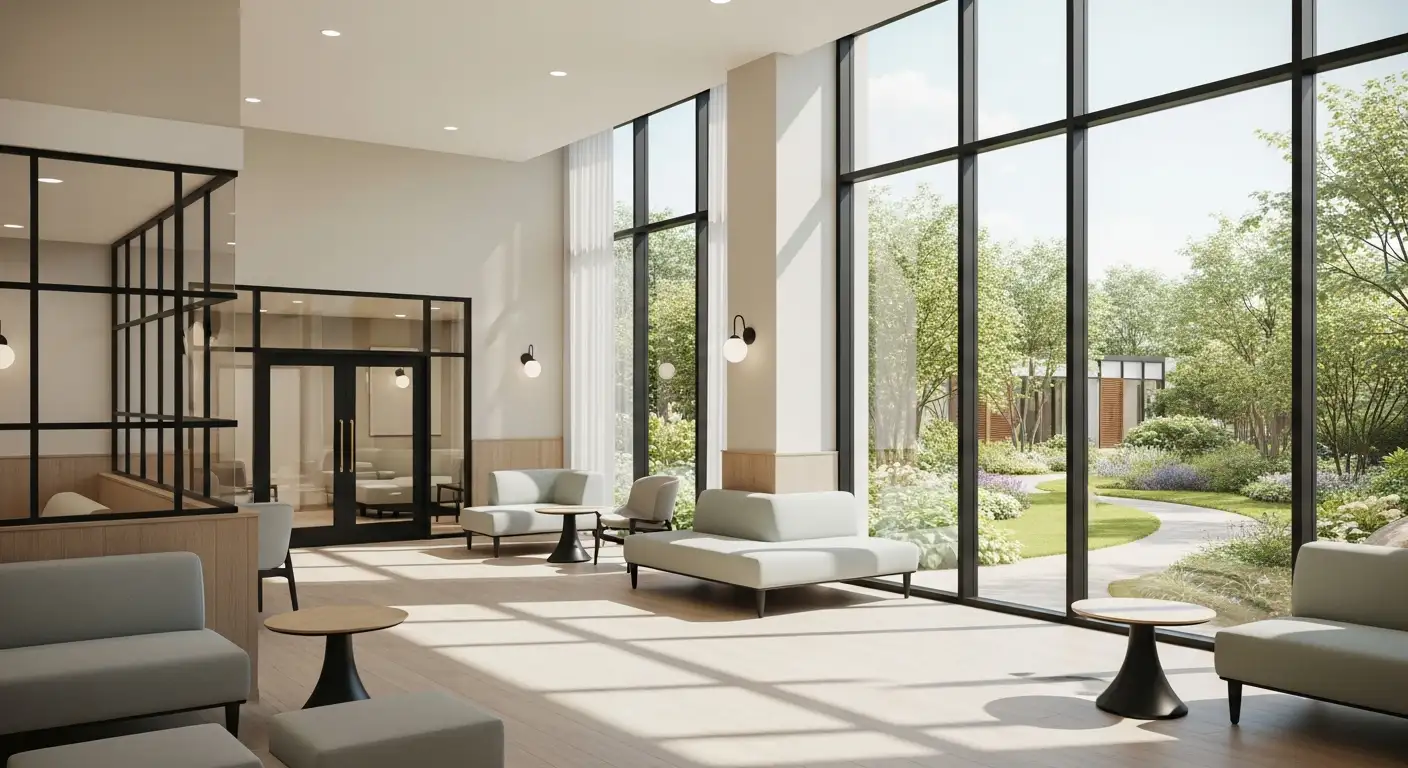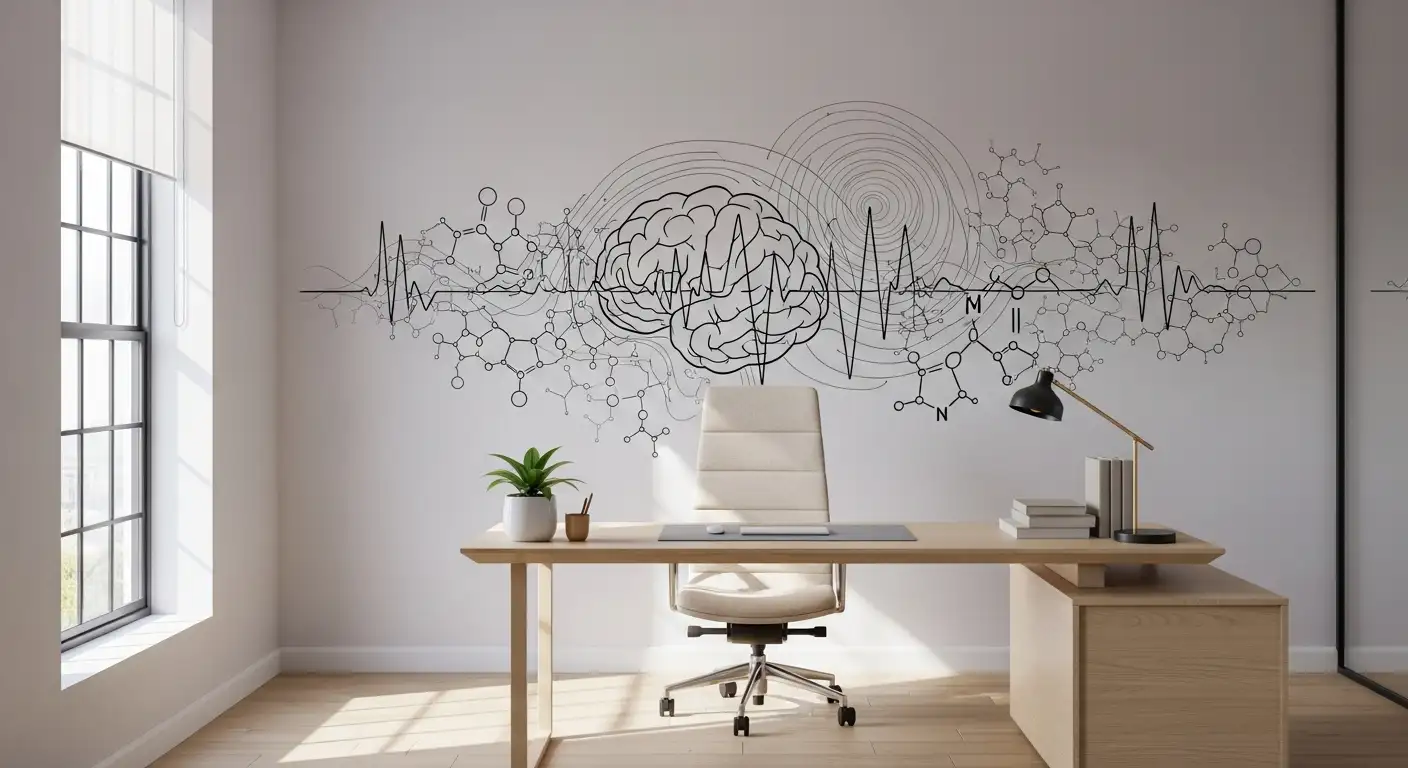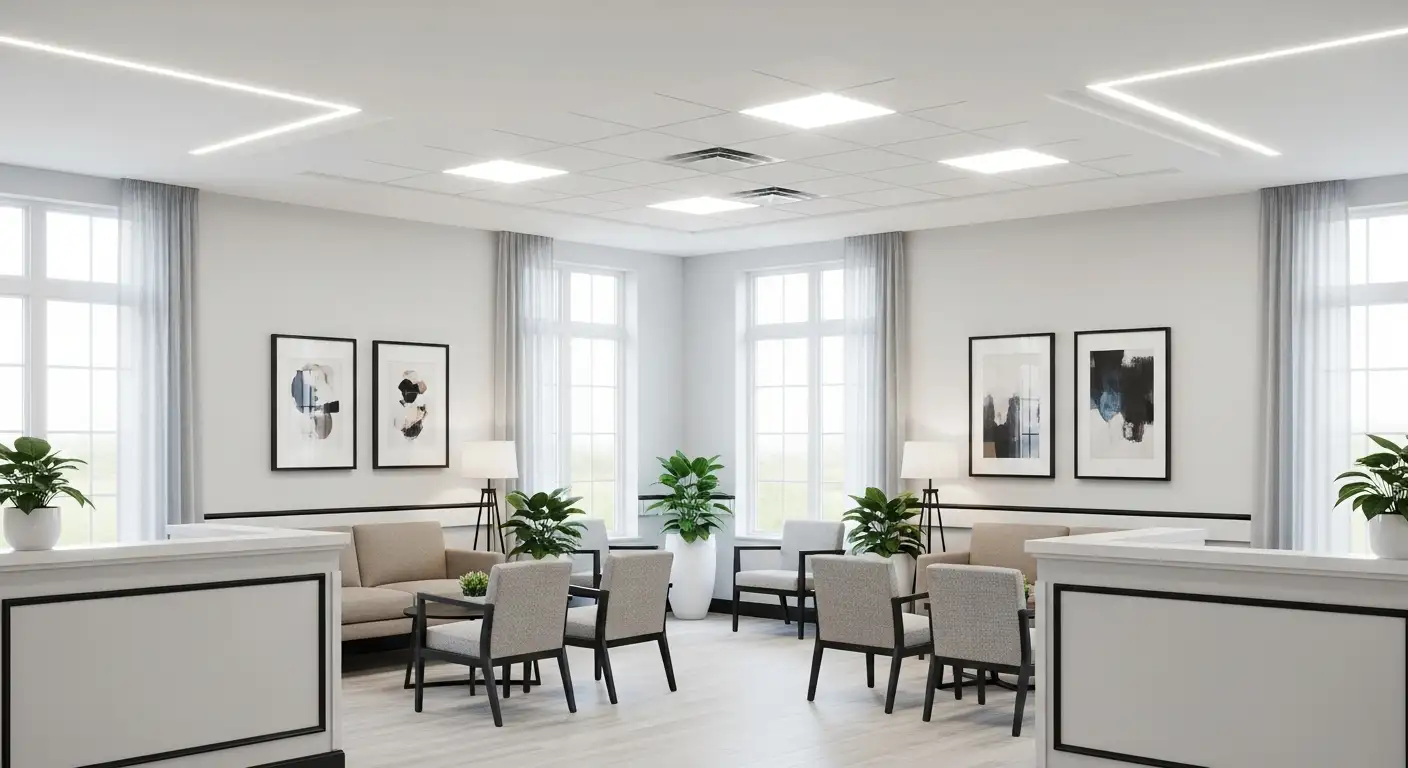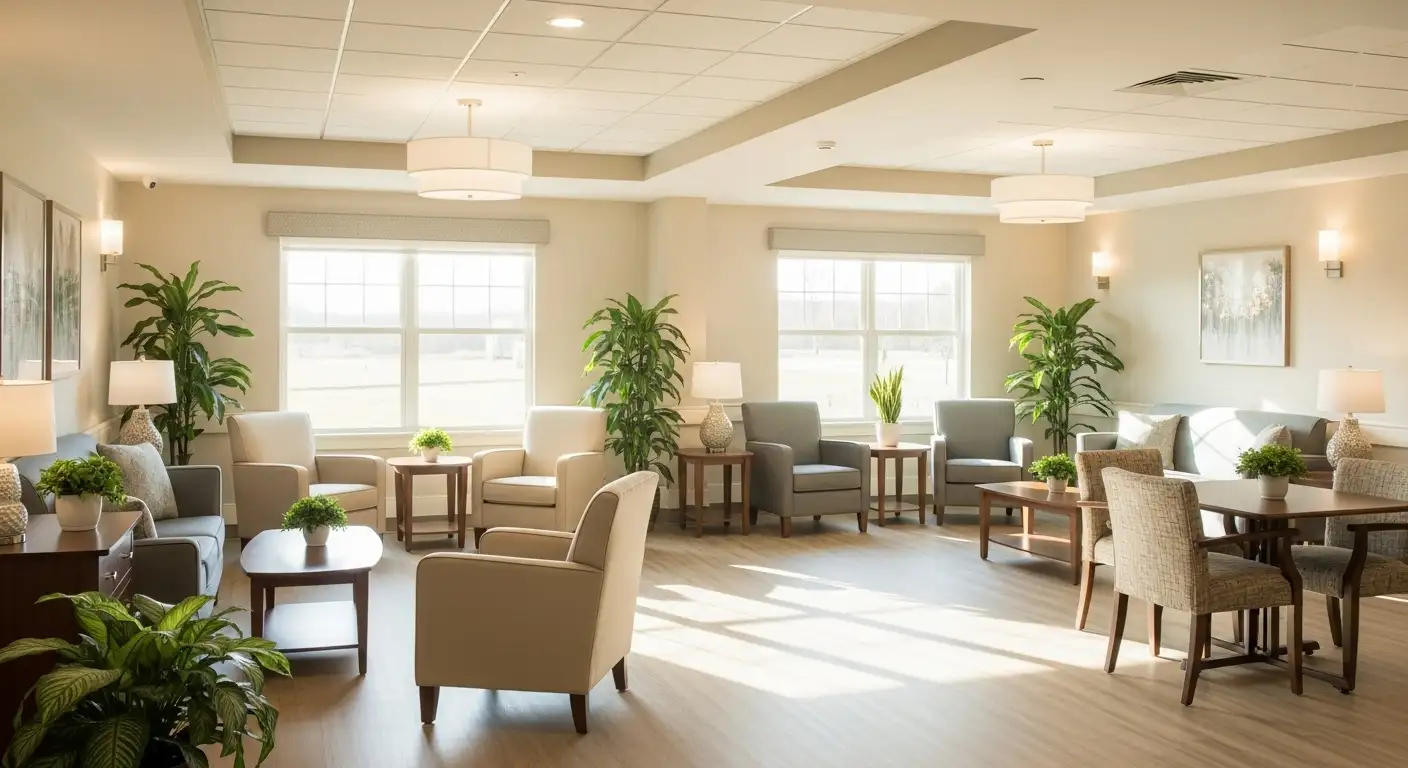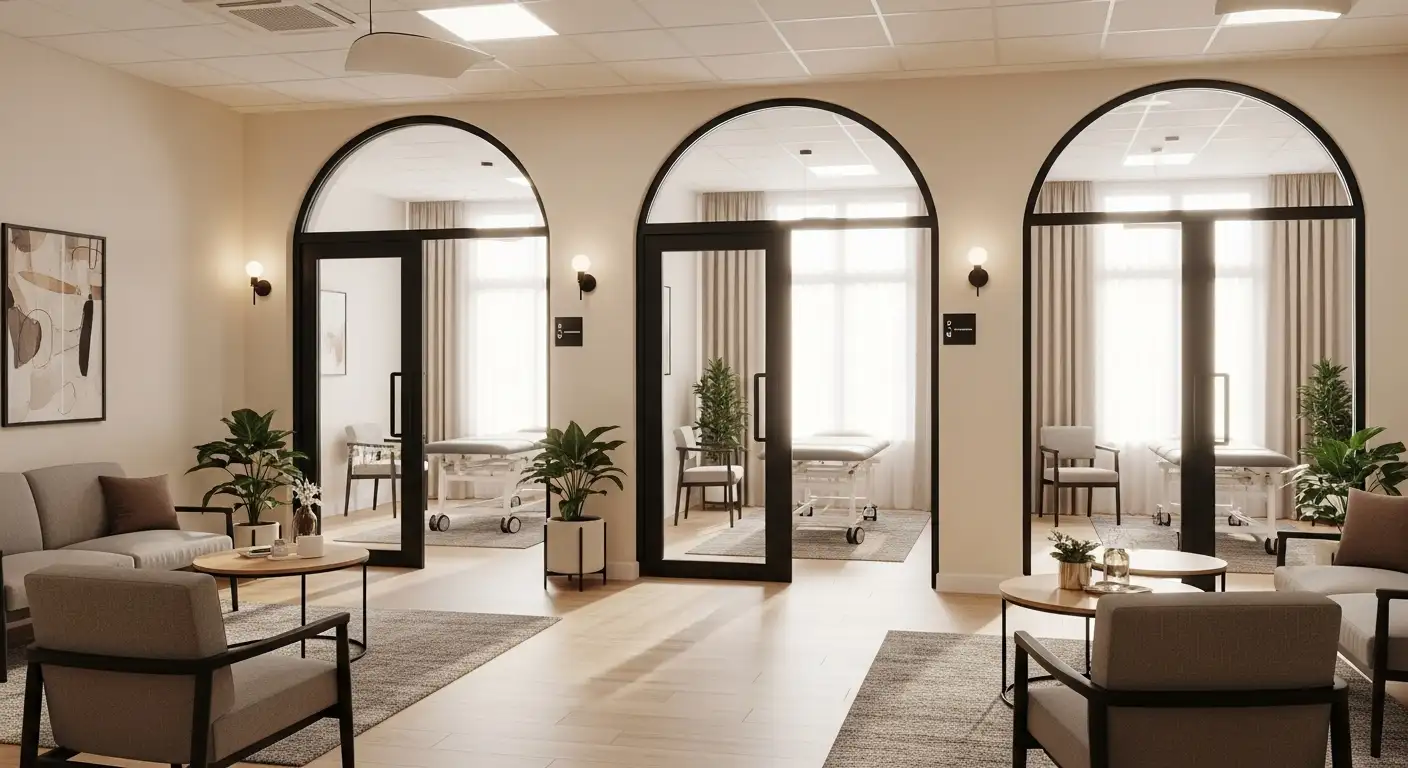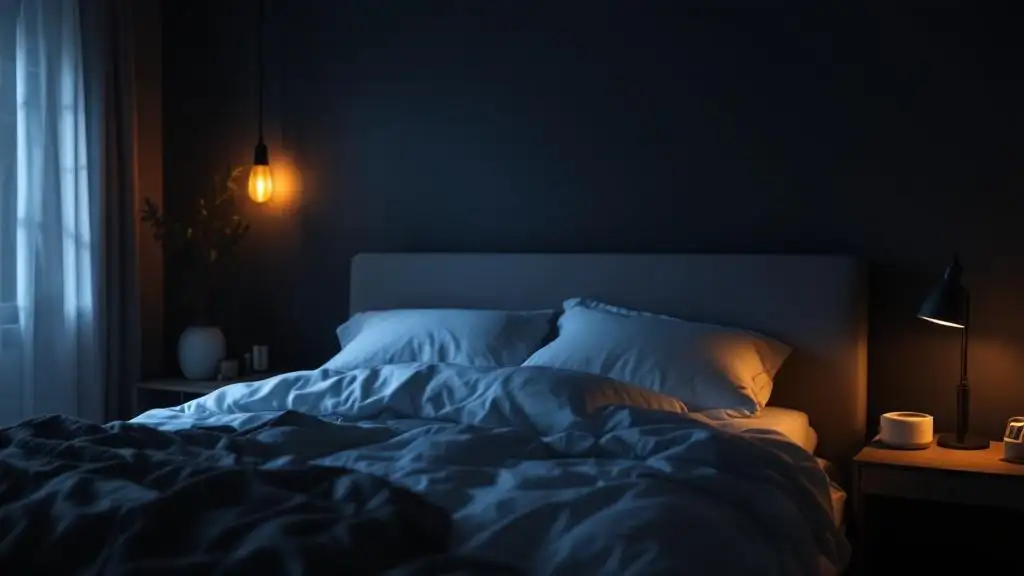Understanding the Impact of Sleep Deprivation in Nursing Homes
Sleep deprivation is a pervasive issue among nursing home residents, with profound implications for behavioral health, overall well-being, and healthcare outcomes. This article explores how poor sleep affects residents, the underlying causes and risk factors, assessment and diagnosis strategies, and effective management approaches to mitigate its adverse effects.
The Prevalence and Consequences of Sleep Disturbances in Nursing Homes
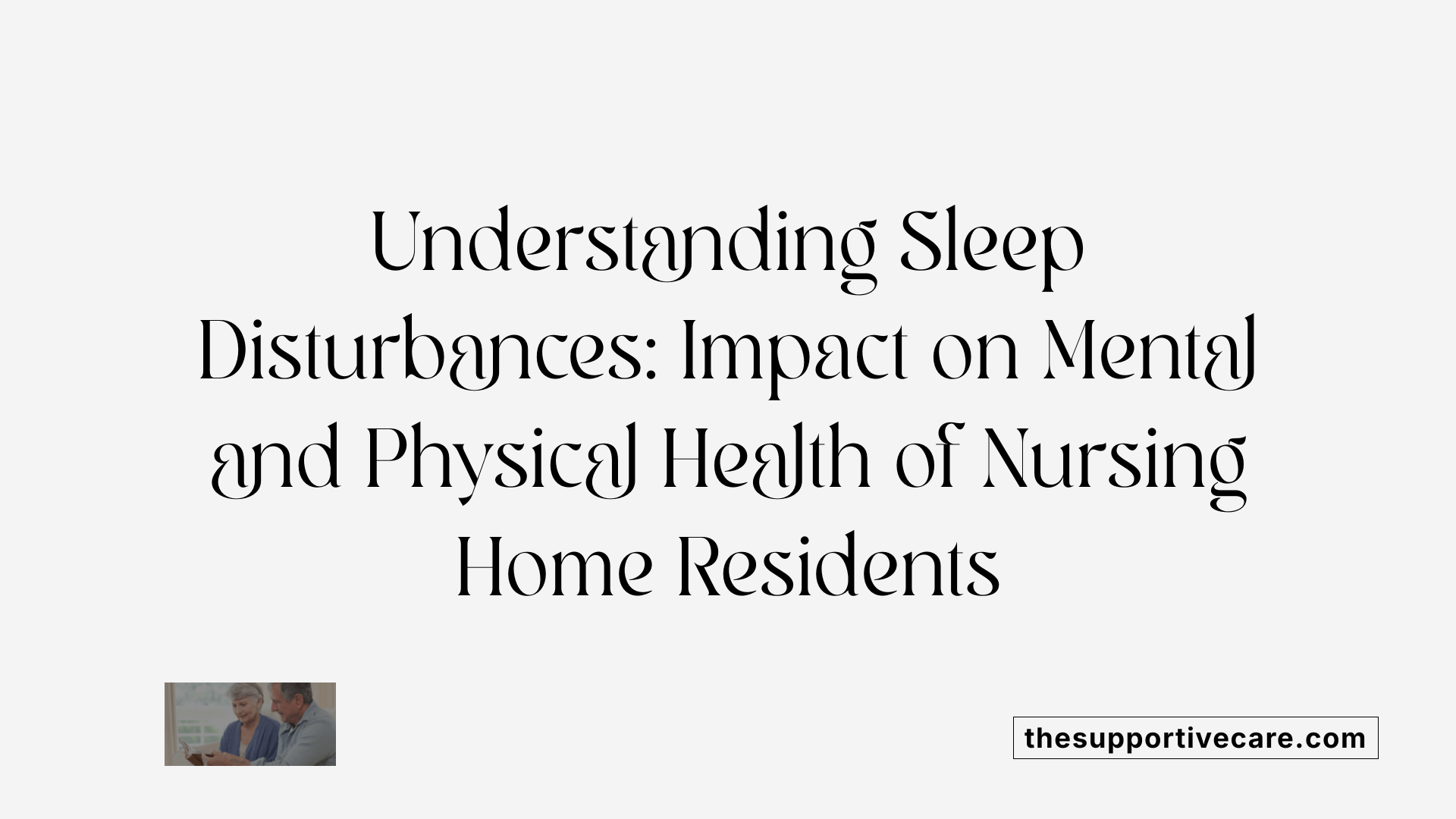
How sleep deprivation impacts behavioral health in nursing home residents?
Sleep deprivation is a common issue among nursing home residents, often leading to significant behavioral health challenges. Residents who experience poor sleep patterns, such as frequent awakenings and insufficient sleep duration, are more likely to develop symptoms of agitation, depression, and anxiety. These mental health issues can further contribute to a decline in cognitive and functional abilities.
Research indicates that residents categorized as 'poor sleepers' tend to have higher rates of depressive symptoms compared to those with better sleep quality. Moreover, use of hypnotic medications, often prescribed to improve sleep, has been linked with increased levels of anxiety and depression, suggesting that medications may not always be the optimal solution.
Environmental factors play a crucial role in sleep quality. Factors like excessive noise, inappropriate lighting, room sharing, and nighttime healthcare activities disrupt sleep continuity. Medical conditions such as dementia, pain, and sleep disorders like sleep apnea and restless legs syndrome further complicate sleep issues.
Addressing these problems involves a multifaceted approach. Environmental modifications—such as reducing noise and improving lighting—along with behavioral interventions like maintaining a regular sleep schedule and managing underlying medical conditions, are essential. Careful medication management is also critical, as reliance on sleep medications can worsen mental health outcomes.
In sum, tackling sleep problems in nursing home residents is vital, not only to enhance sleep quality but also to improve mental health, reduce behavioral disturbances, and promote overall well-being.
Physiological and Age-Related Changes Contributing to Sleep Problems
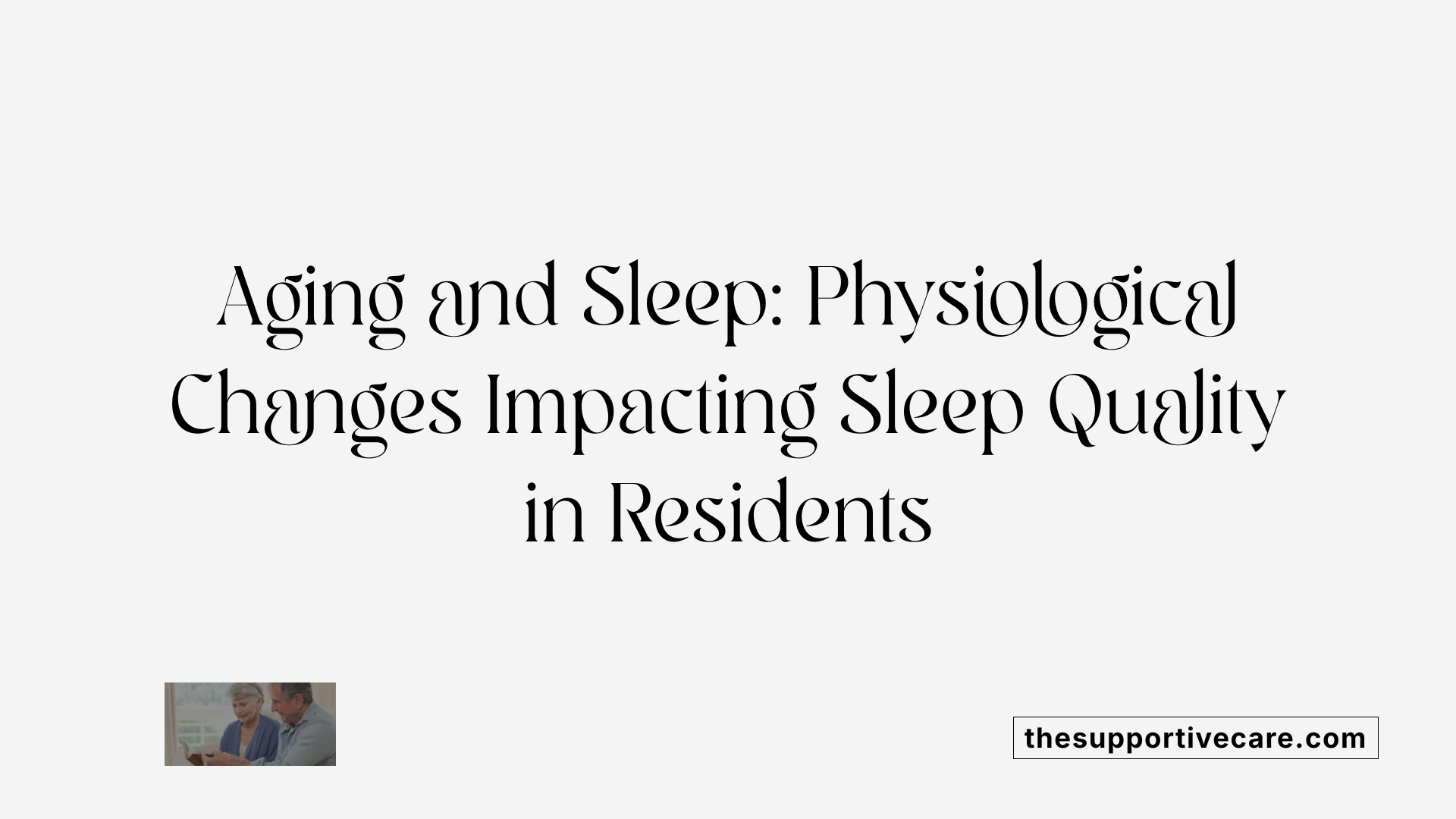
What are the causes and risk factors of sleep deprivation among nursing home residents?
Sleep deprivation in nursing home residents is a complex issue driven by a mix of medical, environmental, behavioral, and physiological factors.
Many residents suffer from conditions such as dementia, depression, chronic pain, and medical illnesses. These health issues disrupt normal sleep patterns and increase the likelihood of fragmented or insufficient sleep.
Primary sleep disorders are common in this population. Studies show that about 69% of residents experience sleep disordered breathing (SDB), which includes conditions like obstructive sleep apnea. Restless legs syndrome (RLS) and periodic limb movements further worsen sleep quality and contribute to frequent awakenings.
Environmental factors within nursing homes also play a significant role. Noise, inadequate lighting, shared rooms, and disturbed sleep due to nocturnal caregiving activities can all disrupt sleep cycles. Additionally, poor sleep hygiene practices, such as irregular schedules and daytime napping, exacerbate sleep issues.
Physiologically, age-related changes greatly influence sleep patterns. As people age, sleep architecture shifts to lighter stages with increased arousals, reduced deep sleep (slow-wave sleep), and less REM sleep. The amplitude of circadian rhythms weakens, leading to early sleep onset and early wake times, often accompanied by sleep fragmentation.
Low daytime exposure to natural light further impacts circadian regulation, heightening sleep disturbances and associated cognitive or mood issues. Combined, these factors create a challenging sleep environment for elderly residents.
Medications such as sedatives, antidepressants, and diuretics commonly prescribed to older adults can interfere with sleep quality and increase fall risks, adding another layer of complexity.
Furthermore, behavioral factors like social disengagement, decreased physical activity, and napping during the day contribute to disturbed nighttime sleep. Overall, these intertwined factors demand comprehensive assessment and tailored interventions to improve sleep health in nursing home environments.
| Factor Category | Specific Factors | Impact on Sleep | Additional Notes |
|---|---|---|---|
| Medical conditions | Dementia, depression, pain, sleep disorders | Fragmented sleep, difficulty maintaining sleep | Many conditions directly disrupt normal sleep stages |
| Sleep disorders | SDB, RLS, PLMS | Sleep fragmentation, daytime sleepiness | Prevalence high; untreated can have serious health consequences |
| Environmental | Noise, light, room sharing, care activities | Sleep disruption, early awakenings | Environmental modifications can help |
| Medications | Sedatives, antidepressants, diuretics | Altered sleep architecture, increased fall risk | Review medications regularly for side effects |
| Physiological | Age-related changes, circadian decline | Increased arousals, early sleep phase, fragmentation | Mitigation includes light therapy |
| Behavioral | Reduced activity, social disengagement | Insufficient physical/mental stimulation | Encouraged through activity programs |
This comprehensive understanding emphasizes the need for multi-faceted management approaches to mitigate sleep deprivation risks among nursing home residents, ultimately improving their quality of life.
Assessment and Diagnosis of Sleep Issues in the Elderly Population
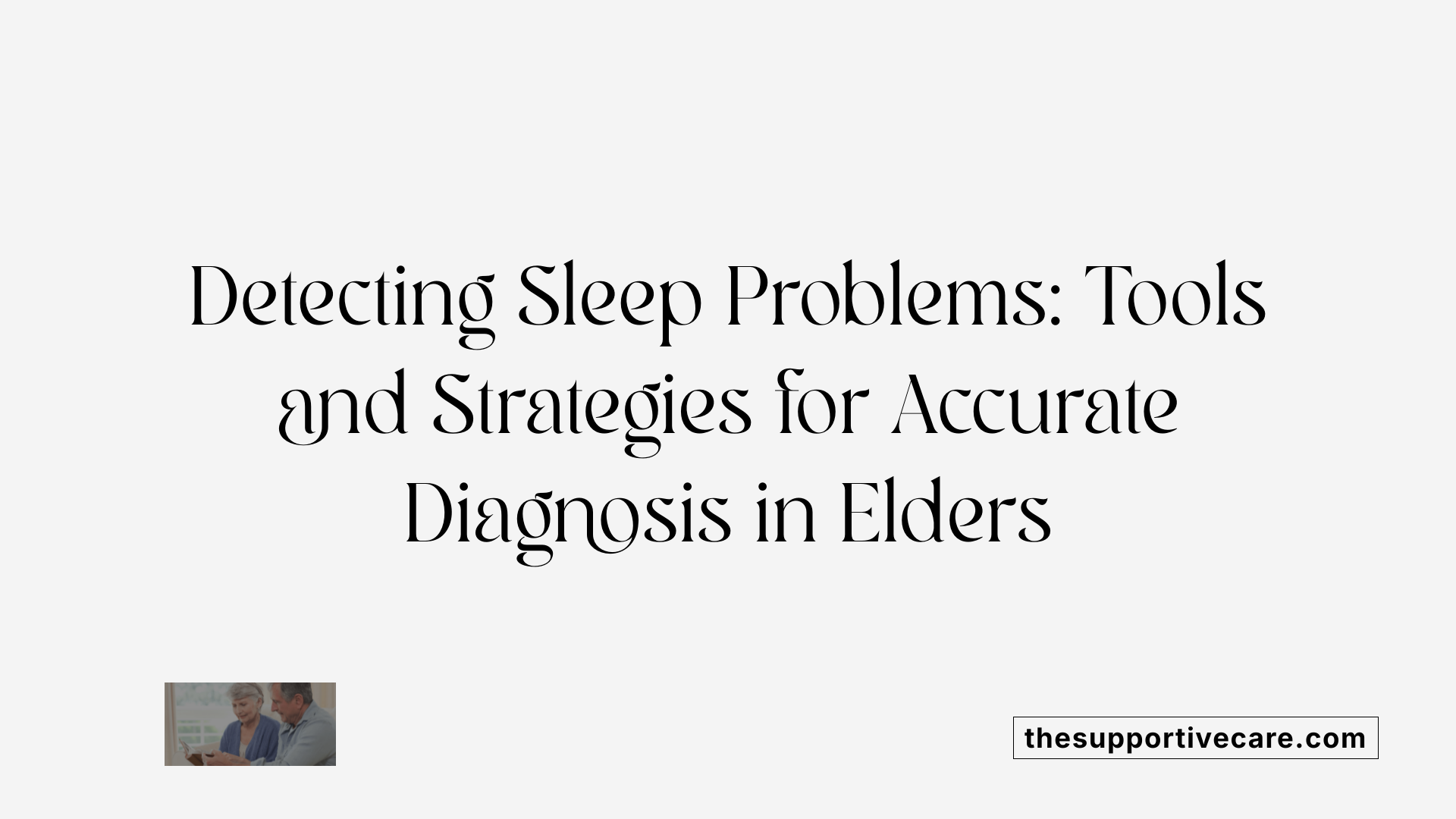
How can sleep issues related to behavioral health be assessed and diagnosed in residents?
Identifying sleep disturbances in elderly residents, especially within long-term care settings, requires a thorough and multi-faceted approach. Healthcare providers start with detailed clinical histories to understand the resident's sleep patterns, behaviors, and medical background. This includes asking about sleep duration, bedtime routines, nighttime awakenings, and daytime fatigue. Observation and sleep diaries are useful tools for tracking sleep behaviors over days or weeks.
Questionnaires also aid assessment; a common example is the Holland Sleep Disorders Questionnaire (HSDQ), which screens for various sleep issues. These subjective tools help gather resident-reported data that can highlight specific problems such as insomnia, sleep fragmentation, or parasomnias.
For more objective evaluation, diagnostic tests are often employed. Polysomnography (PSG) is considered the gold standard—it records brain activity, oxygen levels, airflow, and muscle activity during sleep, enabling diagnosis of sleep apnea, restless legs syndrome (RLS), or REM sleep behavior disorder according to standardized criteria like the ICSD-3. Sleep logs maintained by residents or caregivers provide additional insights into sleep patterns and variability.
Actigraphy involves wearing a wrist device that tracks movement to estimate sleep-wake cycles over extended periods. This method gives useful data about consistency and disturbances in sleep without the need for lab settings.
Importantly, assessment must include evaluation of other contributing factors such as psychiatric conditions (like depression or dementia), medication effects, and environmental influences like noise or lighting. Many sleep disorders can be initially detected through history and screening questionnaires; however, confirmatory testing with PSG or actigraphy is often necessary for accurate diagnosis.
Early and accurate diagnosis is vital, as untreated sleep problems significantly impact mental health, cognitive function, and physical health in elderly residents. A comprehensive, tailored assessment ensures identification of underlying issues and guides effective intervention strategies.
Management Strategies and Nonpharmacologic Interventions
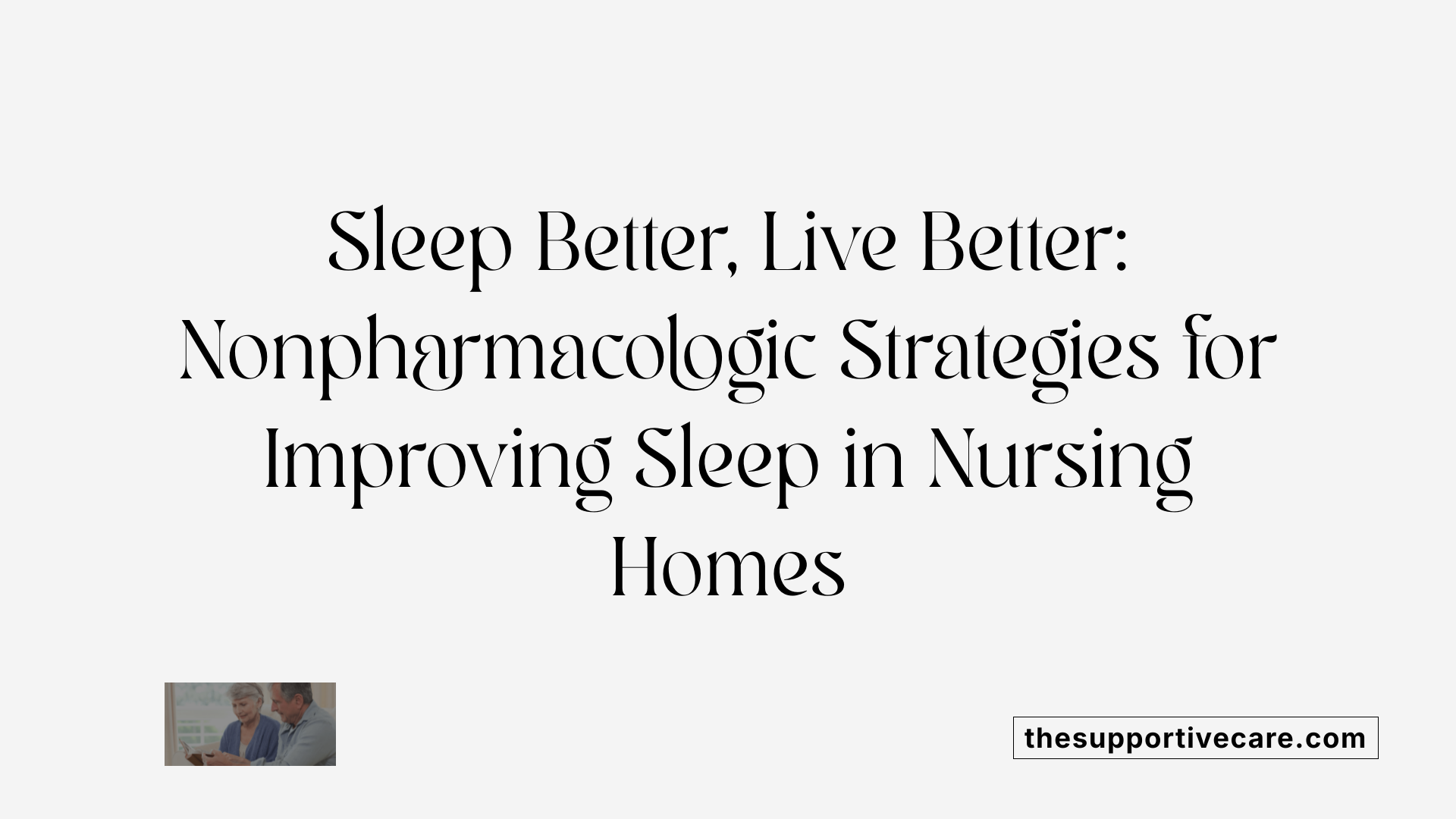
What management and intervention strategies can be employed to address sleep deprivation and improve behavioral health in nursing home residents?
Addressing sleep problems in nursing home residents requires a multifaceted approach focusing on non-drug strategies that promote natural sleep patterns and overall well-being. First, environmental modifications play a central role. Increasing exposure to bright light during the day, especially using artificial bright light therapy with illuminance levels over 2500 lux, helps strengthen circadian rhythms that often weaken with age and institutional living.
Alongside lighting improvements, promoting physical activity such as walking, stretching, or other gentle exercises during daytime hours can enhance sleep quality and boost mood. Social engagement activities are equally important, reducing social isolation and supporting mental health.
Implementing consistent routines—such as regular sleep and wake times, timed meals, and activity schedules—helps regulate residents' internal clocks. Reducing nighttime disruptions—minimizing noise, controlling light levels, and managing nocturnal care activities—can also significantly improve sleep continuity.
For residents with underlying sleep disorders like sleep apnea, the use of Continuous Positive Airway Pressure (CPAP) therapy is recommended to address breathing interruptions during sleep. Managing medical conditions, pain, and psychiatric issues like depression are vital components of a holistic intervention.
Regarding pharmacologic treatments, caution is advised. Benzodiazepines and similar sedatives are discouraged because of their association with increased risks, including falls, cognitive impairment, and dependency. Melatonin, a natural hormone, is sometimes used to support sleep and circadian alignment; however, evidence regarding its effectiveness remains limited, and benefits should be considered on a case-by-case basis.
Routine assessment tools such as actigraphy, sleep logs, and personalized questionnaires can help track sleep patterns and responsiveness to interventions. Multidisciplinary teams—including nurses, physicians, occupational therapists, and mental health professionals—are best positioned to develop and adjust tailored care plans aimed at improving sleep quality.
In summary, a combination of environmental adjustments, behavioral strategies, treatment of underlying disorders, and cautious use of supplements can lead to better sleep and enhance behavioral health outcomes for nursing home residents, ultimately helping to reduce adverse events such as falls, agitation, and decline in functional status.
Impact of Sleep Deprivation on Residents’ Mental and Physical Health
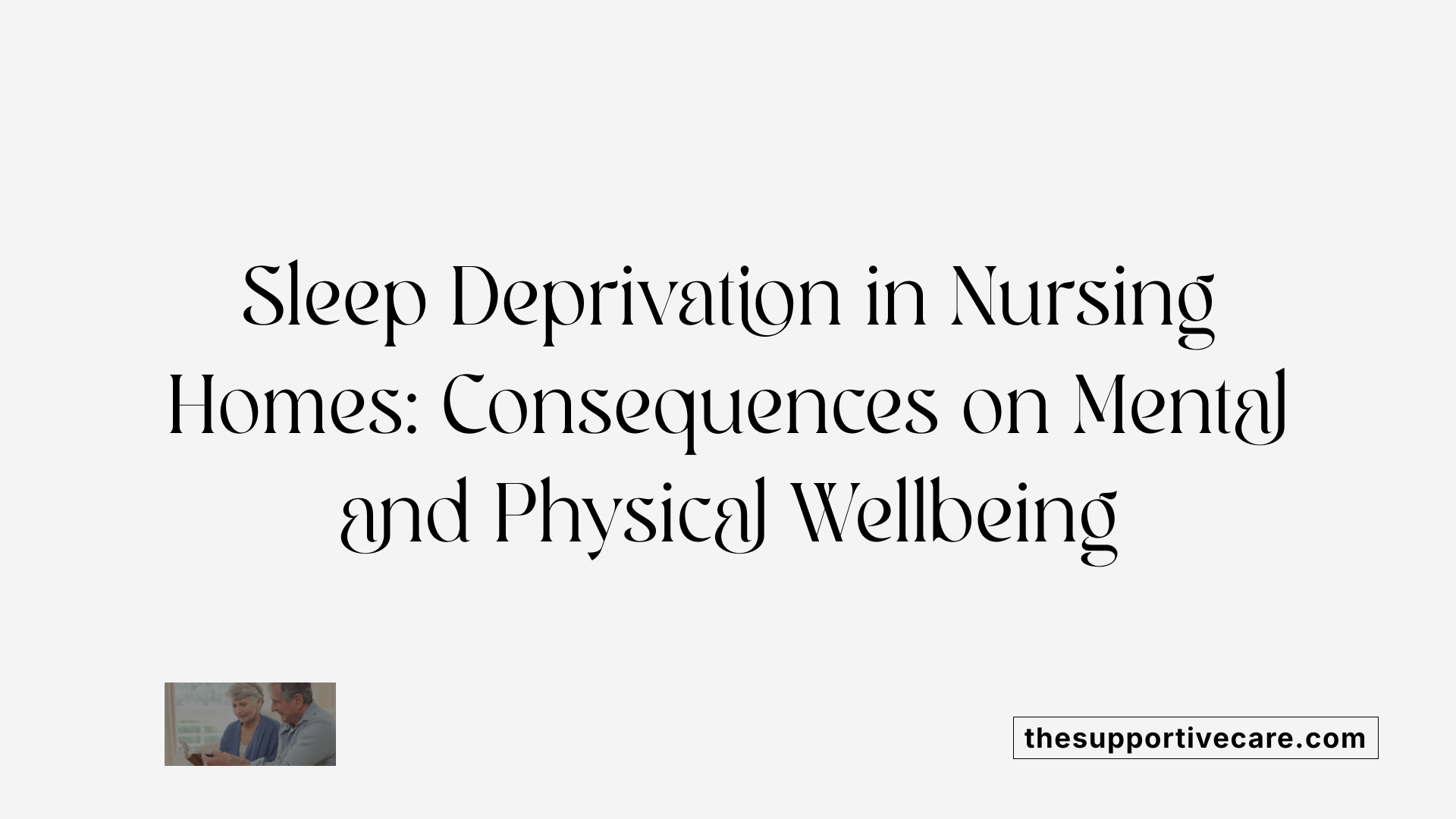
What are the effects of sleep deprivation on mental health, physical health, and overall well-being in nursing home residents?
Sleep deprivation is a common issue among nursing home residents, with significant consequences for their overall health and quality of life. Mentally, inadequate sleep is strongly linked to increased depression and anxiety symptoms. Residents who experience poor sleep often exhibit heightened emotional reactivity and difficulty managing stress, which can exacerbate existing psychiatric conditions such as depression and agitation.
Research shows that sleep problems contribute to cognitive decline, including impairments in attention, memory, and decision-making. The Montreal Cognitive Assessment scores tend to be lower during night shifts, indicating reduced cognitive performance linked to sleep disturbances.
Physically, sleep deprivation severely impacts health by impairing immune function, making residents more vulnerable to infections. It also increases the risk of falls and frailty, partly due to impaired balance, delayed reaction times, and decreased overall physical resilience.
Further, chronic poor sleep has been associated with higher mortality rates in older adults. This reflects the cumulative toll of sleep loss on vital bodily functions, including metabolic regulation and systemic inflammation. Conditions such as obstructive sleep apnea and restless legs syndrome, common in this population, worsen sleep quality and contribute to these adverse health outcomes.
On a broader scale, sleep disturbances lead to decreased functional status, reducing residents' ability to perform daily activities independently. This decline can prompt social disengagement, as residents become less active and less involved in social interactions.
Environmental factors like noise, light disruption, and shared rooms, along with health issues such as dementia, depression, and chronic medical illnesses, further amplify sleep problems in LTC residents.
Addressing these sleep issues involves a multifaceted approach, including optimizing environmental conditions—like controlling noise and light—and implementing behavioral strategies such as increased daytime activity and social engagement. Treating underlying health issues, especially sleep disorders like sleep apnea, is crucial. Nonpharmacologic interventions, including light therapy and sleep hygiene education, are preferred over medications due to their safety.
In summary, poor sleep profoundly impacts residents’ mental and physical health, contributing to depression, cognitive decline, increased risk of falls, frailty, and higher mortality. Improving sleep through environmental, behavioral, and medical strategies can significantly enhance residents’ well-being, functional independence, and overall quality of life.
| Aspect | Impact | Contributing Factors |
|---|---|---|
| Mental health | Increased depression, anxiety, emotional dysregulation | Disrupted routines, comorbid psychiatric conditions |
| Physical health | Impaired immune function, higher fall risk, frailty | Chronic conditions, environmental noise, sleep disorders |
| Overall well-being | Reduced functional status, social withdrawal | Inactivity, cognitive impairment, environmental factors |
Understanding the broad effects of sleep deprivation underscores the importance of comprehensive strategies to promote better sleep and healthier aging within long-term care settings.
Sleep Patterns and Medication Influence in Dementia and Psychiatric Conditions
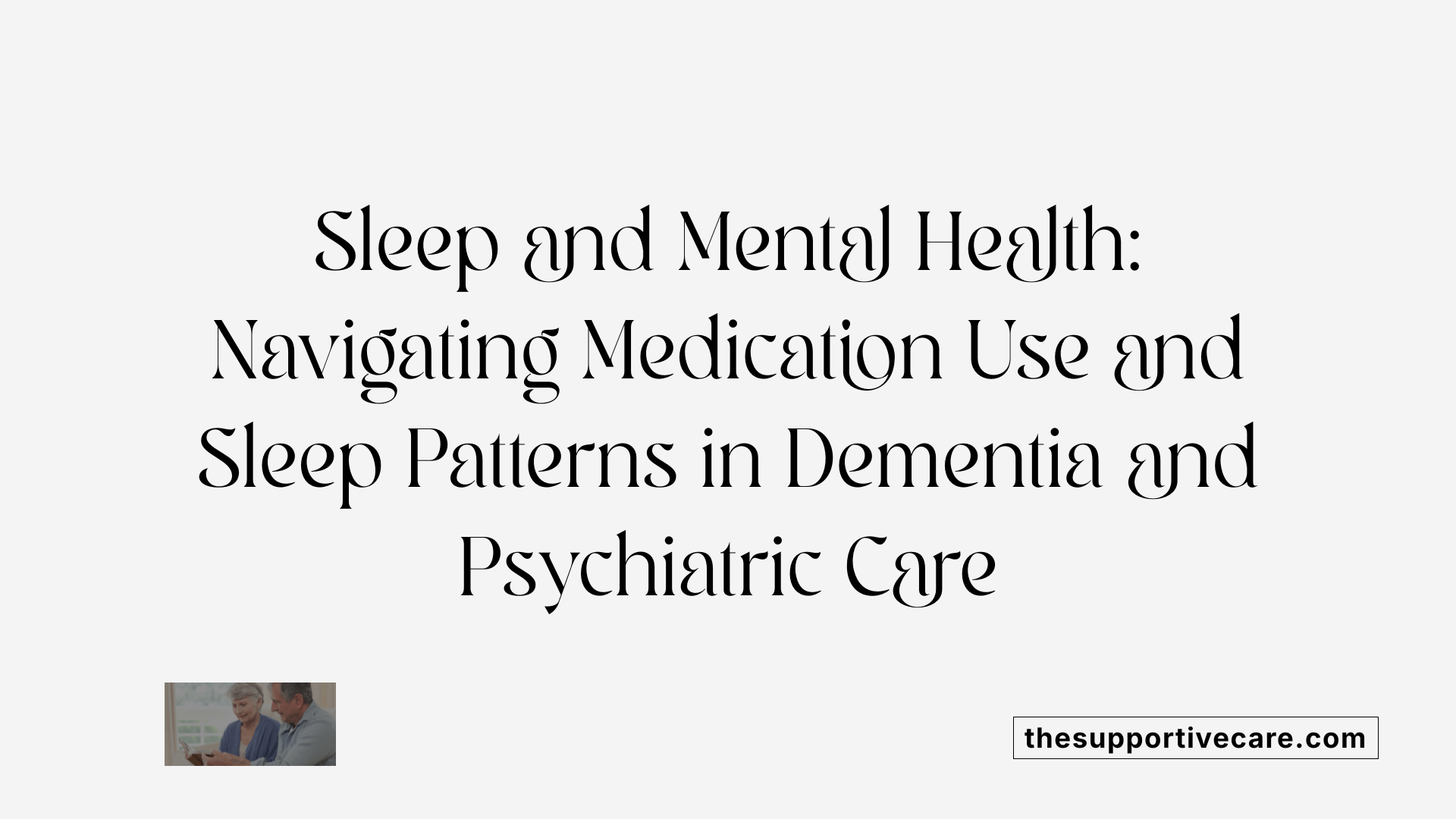
How does sleep deprivation influence mental health conditions in residents?
Sleep deprivation has a profound effect on mental health, especially among residents in long-term care and nursing homes. When individuals experience inadequate sleep—defined as six hours or less per night—it often leads to increased emotional reactivity and difficulties in emotional regulation. This, in turn, can cause mood swings, irritability, and a higher likelihood of experiencing symptoms of depression and anxiety.
Research indicates that sleep problems are both a symptom and a contributor to mental health disorders, creating a continuous cycle. Poor sleep can worsen existing mental health issues, while conditions like depression and anxiety can further impair sleep quality. This bidirectional relationship emphasizes the importance of addressing sleep disturbances in mental health management.
Chronic sleep problems can elevate risks of suicidal thoughts, agitation, and behavioral disturbances, particularly in vulnerable groups such as children, adolescents, and older adults with dementia. For instance, residents with sleep disturbances often exhibit higher rates of depressive symptoms, and the use of sleep medication, such as hypnotics, is frequently associated with increased depression and anxiety.
Effective interventions like cognitive behavioral therapy for insomnia (CBT-I) have been shown to improve sleep quality significantly. Improving sleep not only enhances emotional stability but also supports overall psychological well-being.
Identified sleep patterns: good sleepers, poor sleepers with/without hypnotics
Studies have identified three primary sleep patterns among nursing home residents:
- Good Sleepers: Residents who maintain relatively normal sleep architecture without significant disturbances.
- Poor Sleepers without Hypnotic Use: Those experiencing sleep disruptions but not taking sleep medications.
- Poor Sleepers with Hypnotic Use: Residents using sleep medications, often aligning with more severe sleep disturbances and higher prevalence of depressive and anxiety symptoms.
Residents in the 'poor sleepers' groups tend to show higher levels of depressive symptoms compared to good sleepers. The use of hypnotics is particularly associated with more pronounced mental health issues, which suggests that medication use can be a marker of more severe or problematic sleep issues.
Associations with depression and anxiety
Poor sleep patterns are strongly linked to mental health problems. Residents who struggle with sleep are more likely to exhibit symptoms of depression and anxiety. The relationship is bidirectional; poor sleep exacerbates these conditions, which in turn further disrupt sleep. Notably, residents using sleep medications often display higher levels of depressive and anxiety symptoms, possibly reflecting more severe underlying sleep issues.
Furthermore, sleep disturbances in dementia patients are also connected to behaviors like sundowning, which involve circadian rhythm disruptions leading to agitation and distress. Managing sleep quality tends to improve overall mental health and quality of life.
Impact of sleep medication use on mental health
While medications like benzodiazepines are common for sleep issues, their use is generally discouraged in older adults due to adverse effects such as increased fall risk and cognitive impairment. Data reveal that residents using hypnotics often face more severe mental health symptoms, including depression and anxiety.
Alternative treatments, such as melatonin or herbal supplements, are used but have limited evidence of effectiveness and may carry potential risks. Tailoring interventions based on individual sleep patterns can offer better mental health outcomes and reduce reliance on medications.
| Sleep Pattern Category | Prevalence | Associated Mental Health Issues | Typical Medication Use | Additional Notes |
|---|---|---|---|---|
| Good Sleepers | ?(not specified) | Low levels of depression and anxiety | Usually not on hypnotics | Strong sleep quality, stable mood |
| Poor Sleepers w/o Hypnotics | ? | Higher depressive symptoms | Not on sleep medication | May benefit from non-pharmacologic interventions |
| Poor Sleepers with Hypnotics | ? | Elevated depression and anxiety | On sleep medication | Risk of adverse effects; need tailored approaches |
Understanding these patterns and their links to mental health can help care providers develop targeted, effective strategies to improve both sleep and psychological well-being among residents.
The Role of Shift Work and Nurse Sleep Deprivation
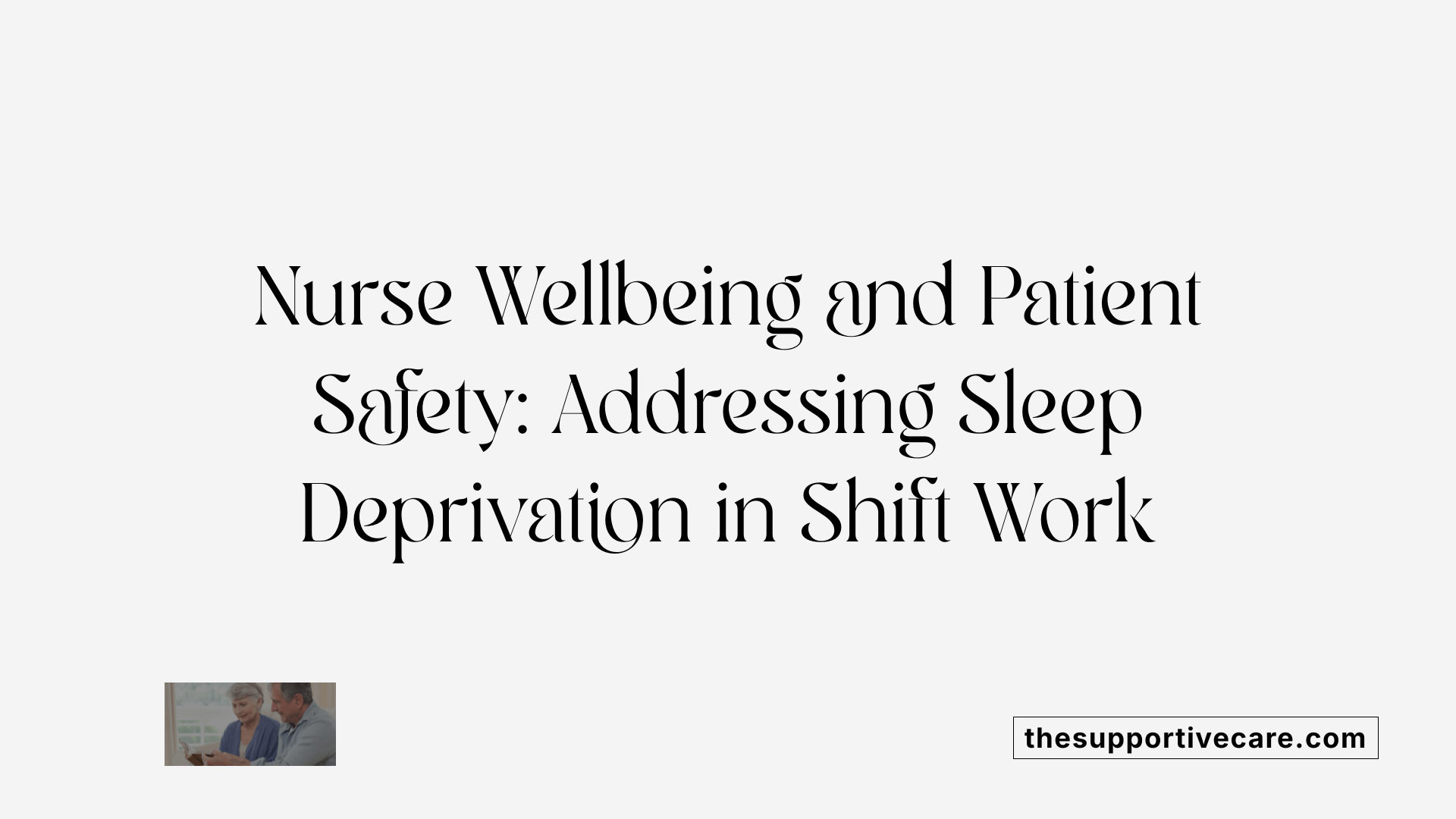
Sleep deprivation among nurses, especially shift workers
Nurses working in shifts, particularly night shifts, often experience significant sleep deprivation. Studies using tools like the Epworth Sleepiness Scale have found that around 69% of shift-working nurses report excessive daytime sleepiness, with an average score of approximately 9.37 points. This persistent sleep loss can cause severe cognitive and physiological effects.
Night shifts disrupt the natural circadian rhythms that govern sleep-wake cycles, leading to difficulties in falling asleep, maintaining sleep, and achieving restorative sleep stages. Consequently, nurses frequently suffer from reduced attention, impaired working memory, slower response times, and decreased alertness during work hours.
Impact on cognitive function, alertness, patient safety
The decline in alertness among sleep-deprived nurses isn't just a personal health issue—it directly affects patient safety. Research highlights that during night shifts, nurses demonstrate a significant decrease in cognitive performance. For instance, cognitive assessments like the Montreal Cognitive Assessment score tend to be lower at night (mean 25.72) compared to daytime (mean 26.81). Reaction times are delayed, and vigilance is compromised.
This deterioration in mental sharpness increases the risk of errors, which can jeopardize patient well-being. Sleepiness impairs decision-making, reaction speed, and overall concentration—factors essential for safe nursing practices.
Scientific insights into sleep deprivation and behavioral health
Research consistently demonstrates a close link between sleep deprivation and behavioral health. It shows that insufficient sleep affects brain regions involved in emotional regulation, heightening negative emotional responses and diminishing positive feelings. This imbalance can lead to mood disorders such as depression and anxiety.
Sleep deprivation also influences hormonal and inflammatory responses, further exacerbating mental health issues. Chronic lack of adequate sleep (less than 8 hours) triples the risk of depression and significantly elevates the likelihood of anxiety disorders.
Interventions like cognitive behavioral therapy for insomnia (CBT-I), maintaining good sleep hygiene, and optimizing work schedules can help mitigate these adverse effects. Addressing sleep quality among nurses is essential not only for their health but also for maintaining high standards of patient care.
| Aspect | Impact | Additional Details |
|---|---|---|
| Sleep deprivation in nurses | Reduced alertness and cognitive function | Affects decision-making, reaction times, and error rates |
| Sleep and mental health | Linked to depression, anxiety, mood disturbances | Chronic sleep loss triggers hormonal and inflammatory responses |
| Safety risks | Increased medical errors | Lower vigilance during night shifts |
| Interventions | Sleep hygiene, scheduling, light therapy | Improve alertness and cognitive performance |
Understanding the implications of sleep deprivation among healthcare workers emphasizes the importance of targeted strategies to improve sleep and, by extension, patient safety and nurse well-being.
Implications for Healthcare Practice and Policy in Long-Term Care Facilities

What management and intervention strategies can be employed to address sleep deprivation and improve behavioral health in nursing home residents?
Addressing sleep deprivation in nursing home residents requires a multifaceted approach that emphasizes nonpharmacologic interventions and personalized care planning. Environmental modifications are fundamental; increasing daytime light exposure through bright light therapy, ideally with lighting levels over 2500 lux, can help reinforce circadian rhythms disrupted by aging and the nursing home environment.
Promoting daytime physical activity, such as walking, stretching, or strength training, not only enhances physical health but also encourages better sleep at night by supporting natural sleep-wake cycles.
Behavioral strategies are equally vital. These include providing education on sleep hygiene, establishing consistent daily routines, and minimizing nighttime noise, light, and interruptions. Such measures help reinforce regular sleep patterns and reduce fragmentation.
In cases where sleep disorders like obstructive sleep apnea are diagnosed, continuous positive airway pressure (CPAP) therapy is recommended to manage symptoms effectively.
Pharmacologic treatments such as sedatives and hypnotics are discouraged because of their adverse effects, which can include increased fall risk, cognitive impairment, and dependency. Melatonin supplements may offer some benefit in regulating sleep, although more research is needed to establish their safety and efficacy.
Routine assessments are essential for timely identification and management of sleep issues. Utilization of tools like actigraphy, sleep logs, and comprehensive clinical evaluations enables tailored interventions.
Implementing a multidisciplinary approach—engaging physicians, nurses, psychologists, physical therapists, and sleep specialists—ensures comprehensive care. Care plans should address medical conditions, medication effects, environmental factors, and behavioral components, ultimately aiming to improve sleep quality and behavioral health outcomes among residents.
How can these practices be integrated into routine care and policy frameworks?
Embedding sleep management strategies into standard care protocols and policies ensures consistency and sustainability. Regular staff training on the importance of sleep, environmental adjustments, and assessment techniques promotes a culture that prioritizes restorative sleep.
Policy development should also incorporate guidelines for environmental standards, routine screening for sleep disturbances, and clear pathways for interventions. This integrated approach can significantly reduce sleep-related problems, enhance residents' quality of life, and decrease associated adverse health outcomes.
The Significance of Ongoing Research and Future Directions

Why Are Longitudinal Studies on Sleep Necessity?
Understanding sleep's role in long-term health requires research that follows individuals over extended periods. Longitudinal studies can reveal how chronic sleep disturbances develop and influence health outcomes, such as cognitive decline, mental health disorders, and physical illnesses like cardiovascular disease.
These studies help clarify causality—whether poor sleep leads to health issues or vice versa—and identify critical periods when interventions could be most effective. Given the widespread prevalence of sleep disturbances among older adults in long-term care settings, continuous research is essential to develop tailored, evidence-based strategies.
How Are Advances in Sleep Medicine and Technology Shaping the Field?
Recent innovations have significantly improved our ability to assess and treat sleep disorders. Technologies like actigraphy and portable sleep monitors allow for less invasive, more accessible sleep tracking outside clinical settings.
Emerging therapies, including light therapy to regulate circadian rhythms and non-pharmacologic interventions such as cognitive behavioral therapy for insomnia (CBT-I), show promise in effective management. Machine learning algorithms now enable personalized sleep health recommendations by analyzing data patterns.
These advancements increase the potential for early detection and targeted treatments, ultimately reducing the negative impacts of sleep disturbances among vulnerable populations, especially in nursing homes and other long-term care facilities.
How Can Sleep Health Be Integrated Into Behavioral Health Strategies?
Incorporating sleep health into broader mental health initiatives can greatly improve overall well-being. Promoting good sleep hygiene—such as maintaining regular sleep schedules, minimizing screen exposure before bedtime, and optimizing bedroom environments—can be foundational.
Training healthcare providers to recognize sleep disturbances as an integral component of behavioral health promotes early intervention. Combining sleep-focused therapies with psychological support, especially for residents with conditions like depression, anxiety, or dementia, enhances outcomes.
Educational programs for caregivers and residents emphasize the importance of sleep, reduce stigma, and encourage lifestyle modifications that support restorative sleep.
What Scientific Findings Explain the Relationship Between Sleep Deprivation and Behavioral Health?
Scientific research demonstrates a biologically and psychologically interconnected relationship between sleep deprivation and mental health. Sleep loss impacts brain regions responsible for emotional regulation, leading to heightened negative responses and diminished positive feelings.
Insufficient sleep—particularly less than 8 hours—has been linked to increased risks of depression, anxiety, and suicidal ideation. Conversely, adequate sleep correlates with better mental health outcomes.
Interventions like CBT-I and environmental adjustments, such as light therapy and physical activity, show significant improvements in sleep quality and mental health. Moreover, chronic sleep problems can worsen pre-existing psychiatric conditions, underscoring the importance of comprehensive sleep management in mental health care.
Additional Future Directions in Sleep Research and Behavioral Health
| Focus Area | Description | Potential Impact |
|---|---|---|
| Longitudinal Research | Tracking individuals over long periods to elucidate causal links | Tailored interventions, early detection |
| Technological Innovations | Use of wearables, AI, and remote diagnostics | Enhanced accessibility, personalized care |
| Integrative Strategies | Combining sleep health with mental health treatment | Improved outcomes and quality of life |
Exploring these areas promises to deepen our understanding and improve the management of sleep-related issues, ultimately fostering better health throughout the lifespan.
Summary and Future Perspectives on Sleep in Nursing Care
Addressing sleep deprivation in nursing home settings is crucial for enhancing residents’ mental health, reducing behavioral issues, and lowering mortality risks. The multifactorial nature of sleep problems necessitates comprehensive assessment, tailored interventions, and policy support. Continued research into innovative, nonpharmacologic strategies and technological advancements promises to improve sleep quality, and in turn, behavioral health outcomes. Prioritizing sleep health within long-term care facilities is essential for fostering holistic well-being and optimizing quality of life for aging populations.
References
- Sleep and Long-Term Care - PMC
- The sleep patterns and their associations with mental health ...
- Effects of Sleep Deprivation on the Cognitive Performance ...
- Sleep disturbances in nursing homes
- Effect of Inadequate Sleep on Frequent Mental Distress
- How Sleep Deprivation Impacts Mental Health
- How sleep affects mental health (and vice versa)


